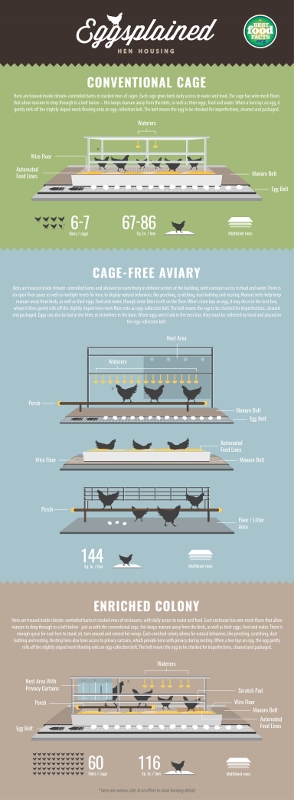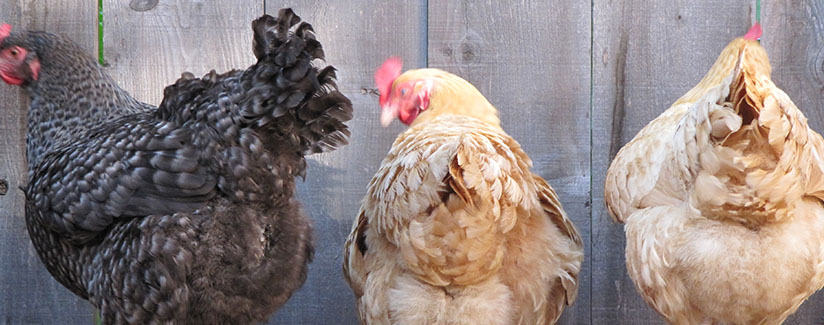Hen Housing: Cage-Free, Enriched Colony and Conventional Cages Explained
04/23/2015
Do you feel like buying eggs has become more complicated? You’re not alone. Words like “organic,” “cage-free” and “all-natural” are now found on egg cartons to the befuddlement of many consumers. We’d like to make your trip to the egg case a little simpler, so we’ve provided an infographic explaining the differences among three of the main laying hen housing systems used to produce eggs: conventional cage, cage-free aviary and enriched colony. We’ve also broken down the pros and cons of each housing system from a research study conducted by the Coalition for Sustainable Egg Supply, which looked at five areas of sustainability: food safety, the environment, hen health and well-being, worker health and safety and food affordability. It’s important to note that while there certainly are trade-offs found in each of the three housing systems studied, safe, high-quality eggs can be produced in each.
Click on the infographic below to open a PDF.

chicken_housing_infographic_v2_cs5
CONVENTIONAL CAGE
| Pros |
Cons |
- Eggs produced in the conventional cage system were most affordable.
- Incidences of aggression were lowest in the conventional cage system, with hens also showing the least amount of feather loss.
- Workers in the conventional cage system were exposed to significantly lower concentrations of airborne particles.
|
- Bone quality of hens in conventional cages was not as good as in other systems due to lack of exercise.
- In regards to indoor air quality, ammonia emissions in the conventional cage system were almost twice that of the enriched colony, negatively impacting worker health.
- While all systems were rated equally safe, the conventional cage system posed some hazards for workers.
|
CAGE-FREE AVIARY
| Pros |
Cons |
- Hens in the cage-free aviary had more opportunity for freedom of movement.
- Hens in the cage-free aviary had the best bone quality due to their ability to exhibit natural behaviors and exercise.
- Workers in the cage-free aviary had no issues gaining access to the system.
|
- Mortality due to cannibalism and aggression was highest in the cage-free aviary, making the mortality rate double that found in the conventional cage system.
- The cage-free aviary system had the greatest impact on worker health due to poorer air quality.
- The cage-free aviary system produced the least affordable eggs, with costs per dozen eggs substantially higher than eggs from the conventional cage or enriched colony systems.
|
ENRICHED COLONY
| Pros |
Cons |
- Ammonia emissions were lowest in the enriched colony system, which has a positive impact on worker health.
- Hens in the enriched colony system had greater freedom of movement and ability to exhibit natural behaviors than hens in conventional cages.
- In the enriched colony system, there was a lower incidence of hens with foot problems than in the conventional cage system.
|
- Hens in the enriched colony had more feather loss than hens in conventional cages, suggesting more aggression.
- Costs to produce eggs were 13 percent higher per dozen eggs than in the conventional cage system.
- While all systems were rated equally safe, workers in the enriched colony system often accessed the hens by using the cage fronts instead of approved ladders.
|
“Chicken Butts” by Cody and Maureen is licensed under CC BY.



























